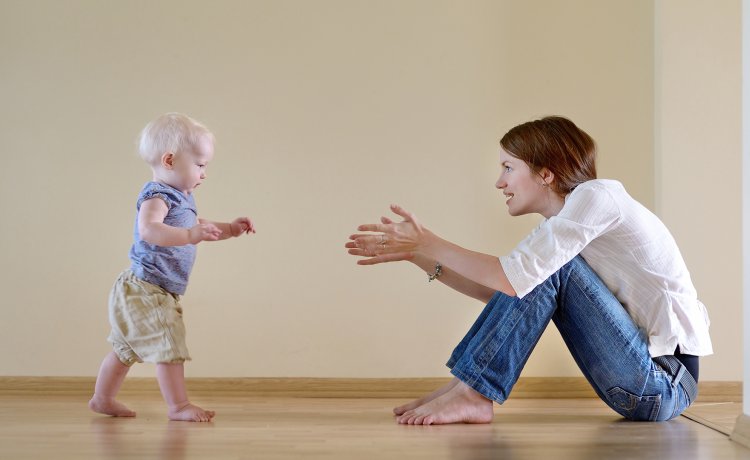
The child’s sense of self and others are shaped in the 2nd yr of life.
The ability to walk allows separation and gives independence.
Age 12-18 Months
Physical Development
Although slower than in the 1st yr, considerable brain growth occurs in the 2nd yr;
Most children begin to walk independently near their 1st birthday; some do not walk until 15 mo of age
Early walking is not associated with advanced development in other domains.
Cognitive Development
Exploration of the environment increases
Play things are also more likely to be used for their intended purposes (combs for hair, cups for drinking).
Imitation of parents and older children is an important mode of learning. Make-believe (symbolic) play centers on the child’s own body (pretending to drink from an empty cup)
Emotional Development
Once they start walking, their mood changes markedly.
A securely attached child will be separating from parents for brief periods of time, exploring things things independently.
The child will be trying new things, plays best alone and probably loves being the centre of attention.
Proud of her or his accomplishments, the child illustrates Erikson’s stage of autonomy and separation
Linguistic Development
around 12 mo of age, they already respond appropriately to several simple statements, such as “no,” “bye-bye,” and “give me”
By 15 mo, the average child points to show something such as major body parts and uses a vocabulary of 4-6 words spontaneously and correctly to make short expressions such as “all gone.” Forms questions by making his voice rise at the end of the sentence: “Daddy go?”
Implications for Parents
Parents who cannot recall any other milestone tend to remember when their child began to walk
The conflicts between independence and security manifest discipline, and changing behaviors.
Age 18-24 Months
Physical Development
Height and weight increase at a steady rate during this year, with a gain of 5 in and 5 lb.
By 24 mo, children are about ½ of their ultimate adult height
Cognitive Development
At approximately 18 mo of age, several cognitive changes come together to mark the conclusion of the sensory-motor period. These can be observed during self-initiated play.
Symbolic transformations in play are no longer tied to the toddler’s own body, so that a doll can be “fed” from an empty plate.
Child knows what ordinary things are for; for example, telephone, brush, spoon
Emotional Development
Many parents report that they cannot go anywhere without having a small child attached to them.
This stage, described as “rapprochement,” may be a reaction to growing awareness of the possibility of separation
Despite the attachment to the parent, the child’s use of “no” is a way of declaring independence.
At this age child may be afraid of strangers, explores alone but with parent close by.
Linguistic Development
the most dramatic developments in this period are linguistic.
a child’s vocabulary balloons from 10-15 words at 18 mo to between 50 and 100 at 2 yr
After acquiring a vocabulary of about 50 words, toddlers begin to combine them to make simple sentences,
At this stage, toddlers understand 2-step commands,
Implications for Parents
words become increasingly important for behavior control as well as cognition
Language development is facilitated when parents and caregivers use clear, simple sentences; ask questions; and respond to children’s incomplete sentences and gestural communication with the appropriate words.
